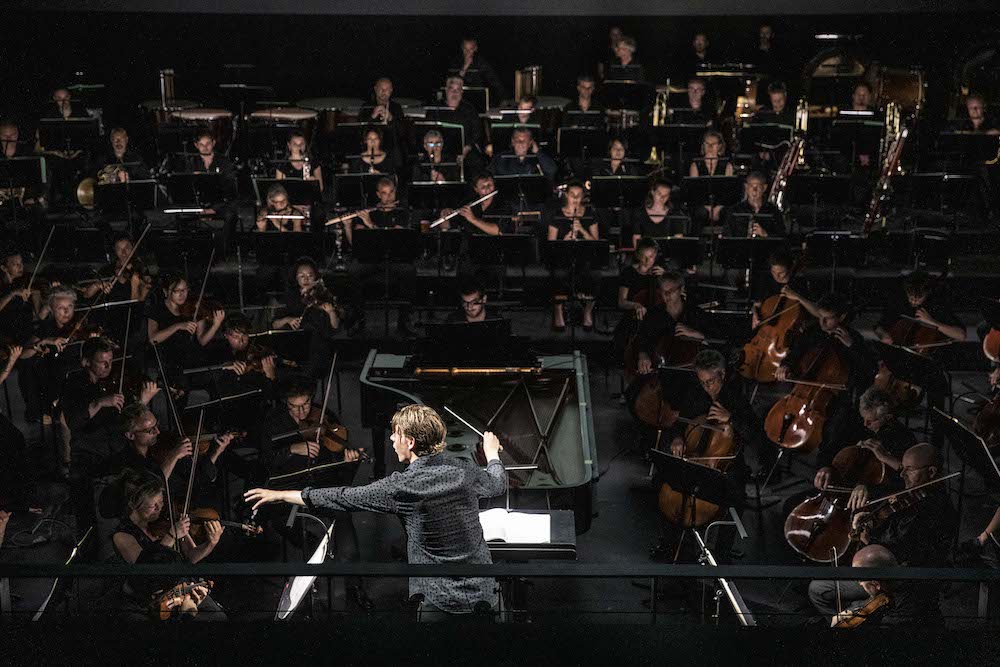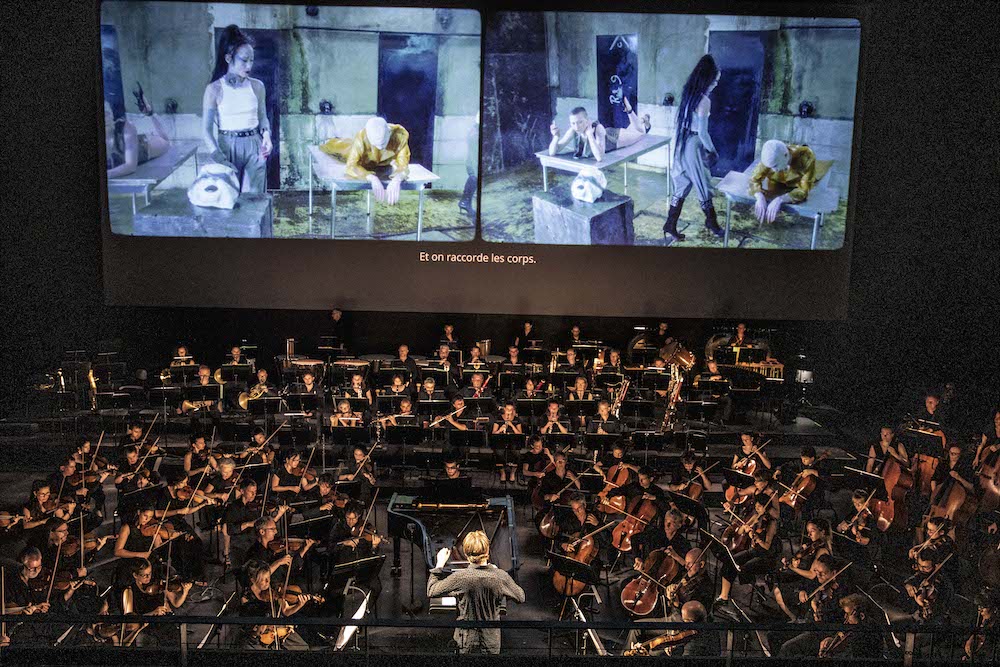Not to be confused with Sergei Diaghilev’s Ballets Russes or Wassily de Basil’s Ballet Russe de Monte Carlo, it was Igor Stravinsky’s trilogy of ballet scores created for Paris based, Russian choreographer Diaghilev in a concert performance by Klaus Mäkelä and his Orchestre de Paris.
That is but the tip of the iceberg. The concerts (four performances) are at the Aix Festival’s recently purloined venue, the Stadium de Vitrolles, an abandoned, 5000 seat handball stadium sitting, forlornly, atop the residue of a bauxite mine twelve or so miles from Aix. The stadium opened in 1994, suffered in political battles fought with the right wing Front National (FN), and closed definitively four years later, in 1998.
Closed that is until Pierre Audi took on artistic leadership of the Festival d’Aix. Mr. Audi is as well artistic director of New York City’s massive Park Avenue Armory (opened 1880), home of the Seventh New York Militia Regiment, now a space for the alternative arts as well — think huge theatrical installations. Arguably maybe not quite as huge as the Festival’s inaugural use, last year, of the Stadium de Vitrolles for Romeo Castellucci’s monumental staging of Mahler’s Resurrection Symphony — performed as well by the Orchestre de Paris and its chorus, conducted by Esa-Pekka Salonen.
Both maestros are Finnish, Esa-Pekka Salonen debuted at the Los Angeles Philharmonic at age 26, becoming its music director soon after, Klaus Mäkelä became the music director of the Orchestre de Paris in 2022, when he was age 26.
At the Stadium de Vitrolles the audience sits upon a huge, 1000 or so seat bleacher (though the graffiti decorated stadium is a covered concrete block), the orchestra is seated in a huge pit at the base of the bleacher. The space allotted to the orchestra is enormous, the winds and percussion are on rising platforms behind the strings, all of this resting on a huge platform under which are the dressing rooms for the orchestra.
This pit platform acts as a massive sounding board, clearly projecting the smallest sounds into the cavernous space as well as creating full ensemble volumes that reach monumental decibel levels, never losing a clarity and transparency of tone that boasts requisite, never overly obtrusive reverberation. Suffice it to say that the Aix Festival is in possession of an acoustical miracle.
The steep stadium bleacher seating, like sports stadium seating, allows the audience a huge visual field on which the orchestra sits, the three works of the young, Russian Stravinsky — student of Rimsky-Korsakov, steeped in the folklore of his homeland — achieving a visual spectacle that rivals a football match between the Olympique de Marseille and Paris Saint-Germain! Well, sort of, maybe.

The star of the show was conductor Mäkelä, brightly lighted, who elicited the clean, skillful playing that you expect from one of the world’s great orchestras. That there were any personal insights into these works was lost in the sheer rhythmic power and brilliant colors this maestro drove home in these, by-now, solely concert pieces — even at their premieres they were recognized as stand alone music. The maestro’s tempos were staid, color was paramount, meaning was irrelevant.
The Firebird, Petrushka and The Rite of Spring were here made into polished monuments to twentieth century modernism performed by a prestigious twenty-first century orchestra. While The Firebird requires three harps, celeste, piano, quadruple winds plus Wagner tenor and bass tubas, tympani and a bevy of percussion, and strings (here 16/14/12/10/8), Petrushka requires but two harps, though the role of the piano is greatly expanded. The Rite of Spring requires quintuple winds and brass, though eight horns and two sets of tympani, etc.
That these forces once fit (the second decade of the previous century) into the pits of the Palais Garnier, the Théâtre Chatalet and the Théâtre des Champs-Elysées respectively is indeed a mystery.
The orchestral field of the Stadium de Vitrolles occupied two thirds of the total visual field, the upper third was a movie screen approximately 80 feet wide on which three separate film makers competed with Stravinsky for our attention. All the films held some vague or very vague references to the original story lines of the ballets, but told other oblique, modern dress, sophisticated tales, sometimes with reference to the musical happenings in the pit, but mostly seemingly oblivious to the Stravinsky primal soundscapes.
French film maker Rebecca Zlotowski created The Firebird (L’Oiseau de Feu), a tale of two, early 20th century, same sex couples finding themselves, the final image was the firebird character drinking from a champagne bottle held high. The personae of the story were rendered highly personal by the frequent closeups of their faces, unlike the abstract, folkloristic story telling of the ballets.

French film maker Bertrand Mandico created the Petrushka (Petrouchka) film, far more successful than the Firebird film as it abstracted characters, often juxtaposing the same images side by side at slightly offset moments adding some rhythmic complexity. Though Mr. Mandico deployed a war like backstory against which models and mannequins of the 1970’s fashion avant garde moved in cruel ways, there was a definite tongue-in-cheek feeling somewhat relevant to Stravinsky rather whimsical score.
Greek born, French formed filmmaker Evangelia Kranioti created The Rite of Spring. Finding the first two films irrelevant to the orchestral spectacle I allowed my attention to focus entirely on the Stravinsky orchestra and the dynamism of this young conductor, thus I did not watch The Rite of Spring film.
The Orchestre de Paris’ performance of Le Sacre du Printemps was mind blowing in its sonic magnitude, understandable as the catalyst for the most significant (meaningful) riots, possibly, seen in Paris since the French Revolution.
Michael Milenski